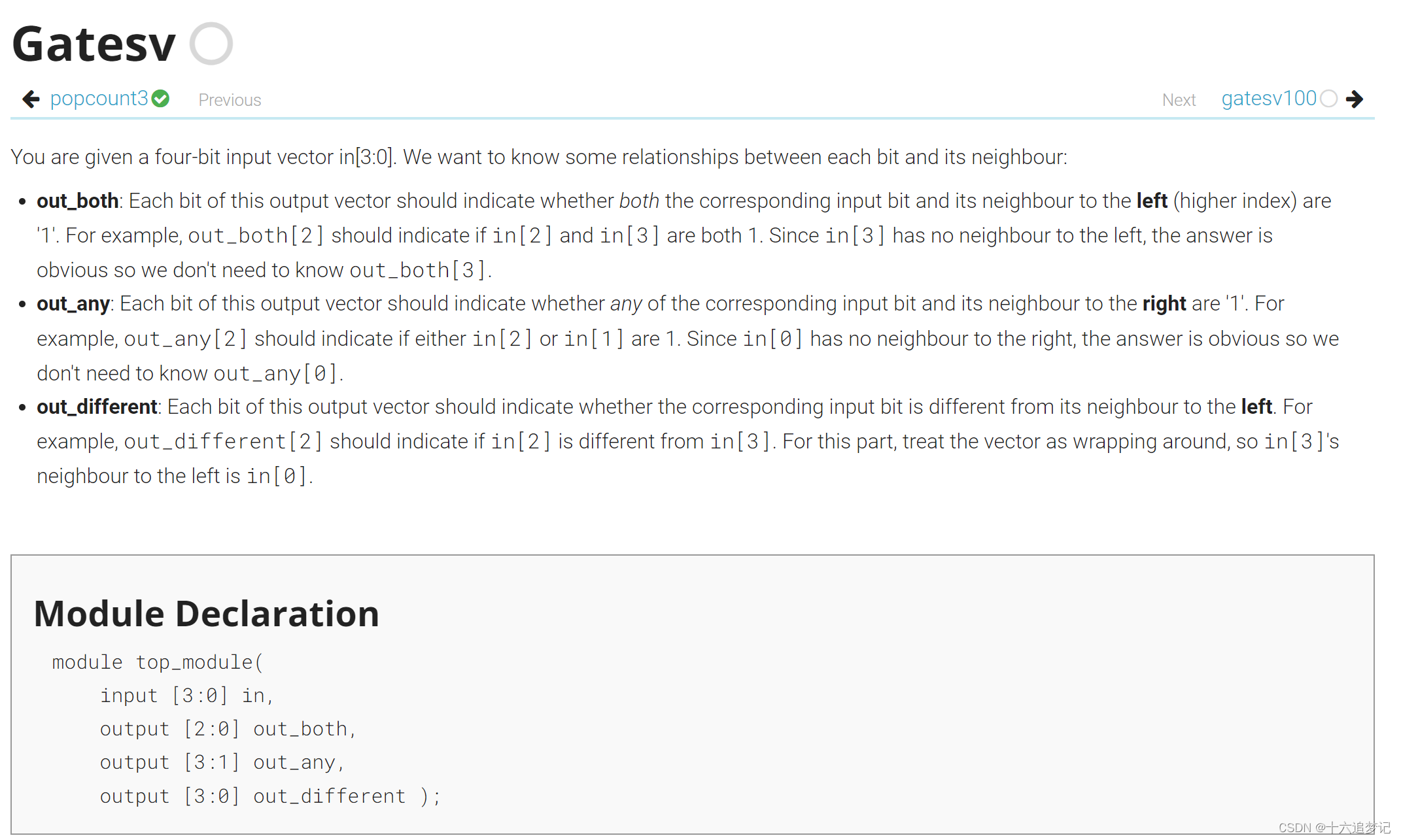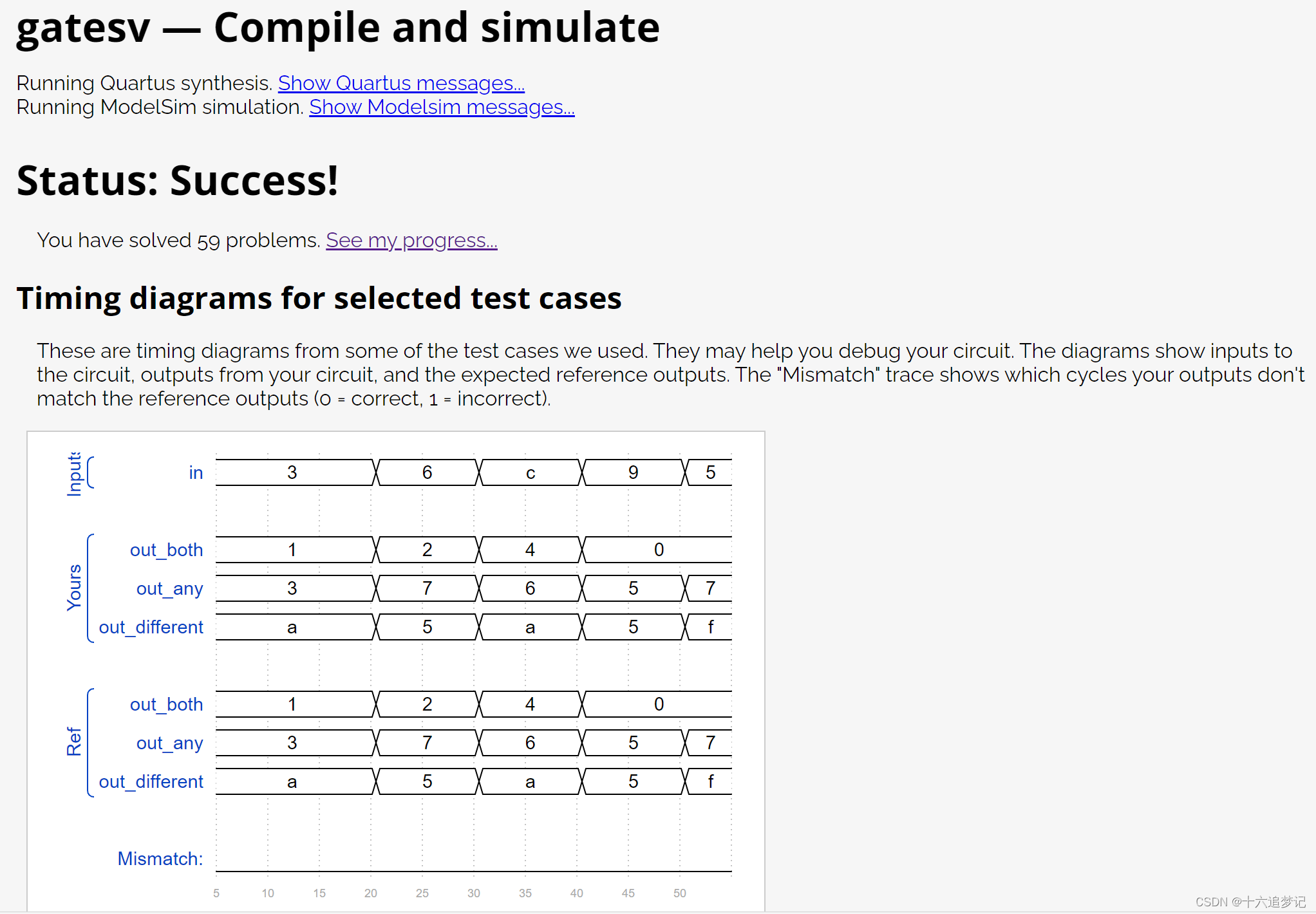题目:
You are given a four-bit input vector in[3:0]. We want to know some relationships between each bit and its neighbour:
out_both: Each bit of this output vector should indicate whether both the corresponding input bit and its neighbour to the left (higher index) are ‘1’. For example, out_both[2] should indicate if in[2] and in[3] are both 1. Since in[3] has no neighbour to the left, the answer is obvious so we don’t need to know out_both[3].
out_any: Each bit of this output vector should indicate whether any of the corresponding input bit and its neighbour to the right are ‘1’. For example, out_any[2] should indicate if either in[2] or in[1] are 1. Since in[0] has no neighbour to the right, the answer is obvious so we don’t need to know out_any[0].
out_different: Each bit of this output vector should indicate whether the corresponding input bit is different from its neighbour to the left. For example, out_different[2] should indicate if in[2] is different from in[3]. For this part, treat the vector as wrapping around, so in[3]'s neighbour to the left is in[0].

解题:
module top_module( input [3:0] in,output [2:0] out_both,output [3:1] out_any,output [3:0] out_different );integer i,j,x;always@(*)beginfor(i=0;i<3;i++)out_both[i]=in[i]&in[i+1];for(j=1;j<4;j++)out_any[j]=in[j]|in[j-1];for(x=0;x<3;x++)out_different[x]=in[x]^in[x+1];out_different[3]=in[3]^in[0];endendmodule
结果正确:


)

















